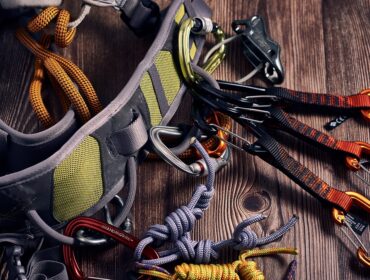Venturing into the wilderness demands preparedness. Whether you’re building a shelter, sourcing water, or starting a fire, having the right tools can make the difference between disaster and self-reliance. Below are the bushcraft essentials every bushcraft survivalist needs and why they matter.
1. Fixed-Blade Bushcraft Knife
A versatile fixed-blade knife is the foundation of any bushcraft kit. With a full-tang construction and sturdy spine, it enables cutting, carving, batoning into wood, food prep, and shelter crafting. The knife spine can also be used for batoning – striking it with a wooden baton to split logs into kindling, essential for fire and shelter.
Key tasks:
-
Whittling and feather-sticks
-
Carving tools, utensils
-
Field dressing game
-
Shelter construction
2. Folding Saw (Bushcraft Saw)
While a knife works for smaller chores, a folding saw makes cutting logs and clearing larger branches efficient and safe. Its compact size makes it easy to carry, and it’s especially handy when preparing wood for fire or building sturdy structures.
3. Compact Axe or Hatchet
A small hatchet or bushcraft axe introduces splitting power. It makes chopping firewood, crafting stakes, and dressing larger timbers much quicker. A well-balanced hatchet is generally more portable than a full-sized axe and effective for long-term use.
4. Firemaking Tools (Ferro Rod / Magnesium Striker)
Fire is survival. Having dependable fire tools like a ferro rod or magnesium striker ensures you can start a fire in wet or windy conditions. Ferro rods last hundreds of strikes, are waterproof, and are much more reliable than matches. Pair it with tinder like cotton coated in wax or fine wood shavings in a small container.
5. Cordage (Paracord or Strong Rope)
Cordage – especially 550 paracord is lightweight and capable of dozens of tasks. Use it for shelter rigging, securing gear, making snares, lashings, clothesline, or emergency repairs. It’s a multi-tool in string form.
6. Sharpening Tool
Even top-tier cutting tools become ineffective when dull. A portable whetstone, credit-card-size sharpener, or stropping kit lets you maintain a razor edge. Sharp blades are safer and more efficient – don’t head out without means to sharpen.
7. Shelter & Water Essentials
-
Tarp or Emergency Blanket: A lightweight tarp or survival blanket doubles as a shelter, rain catchment, ground sheet, or makeshift bivvy.
-
Cooking Pot / Metal Cup & Canteen: For boiling water, cooking food, or even melting snow, a small metal pot or mug is invaluable .
-
Water Filter or Purification Tablets: Boiling water is safest, but a portable filter or purification tablets offer alternatives when fire isn’t possible .
8. Navigation & Signaling Tools
-
Compass & Map: Avoid reliance on GPS alone – tools like a lensatic compass and map provide reliable backup .
-
Signal Whistle / Mirror: Lightweight gear that can attract attention in emergencies, far more efficient than shouting .
9. First Aid Kit
Every trip should include a compact kit with bandages, antiseptic wipes, blister treatments, and basic medications. Minor injuries can become serious without prompt care.
10. Optional Tools & Extras
Depending on pack weight and your outdoor discipline, consider:
-
Primitive carving tools (hook knives, draw knives) for wood crafting .
-
Fishing line, snare wire, hooks for procuring food via traps or small catches .
-
Hobo Stove or bush box, compact stove for cooking or boiling when fire permits ﹘ part of extended survival kits .
Real-World Insight: Reddit Endorsed Gear
From discussions on r/Bushcraft:
“Typically I carry a Mora and either an axe or a folding saw, a fire kit including some tinder, accelerant such as solid fuel tabs, storm matches, a ferro rod, and a nylon tarp, or a survival blanket, 25 or 50 feet of cordage, and a nesting steel pot and cup…”
Another user lists:
“Outdoor knife, ferro rod, tarp, paracord, folding spade, axe, hobo stove (bush box), titanium cup (750 ml)… hammock, sleeping bag.”
These community‑vetted kits emphasize border‑best compact gear for reliable bushcraft performance.
Why These Tools Matter
-
Self-Reliance – Knowing how to use minimal tools to build shelter, start fire, process food, and signal for help empowers independence.
-
Multi-Task Functionality – The tools listed serve multiple roles: a knife also carves, shelters, and butchers; paracord ties checklist items.
-
Portability & Durability – Choose gear that resists corrosion, weighs little, yet withstands rugged outdoor use.
-
Essential Resource Management – Especially for water and fire, the right equipment prevents dehydration, hypothermia, and complete immobilization.
FEMA and survival experts echo this sentiment: “tools like fire-making supplies, water purification, emergency shelters, and navigation tools are crucial” in outdoor or home emergency kits.
Assembling Your Bushcraft Kit
Here’s a sample compact gear setup expected to sustain several days:
| Tool Category | Example Item | Purpose |
|---|---|---|
| Fixed knife | Mora Classic or similar full-tang knife | Carving, shelter, food prep, batoning wood |
| Folding saw | Silky PocketBoy or Bahco Laplander | Efficient cutting of branches/logs |
| Hatchet | Compact bushcraft hatchet | Splitting, trimming, shelter-building |
| Fire starter | Ferro rod + magnesium bar | Sparking fire under all conditions |
| Cordage | 50 ft paracord | Lashing, traps, first aid, tools repair |
| Sharpening tool | Silicon-carbide sharpener / stone | Maintaining blade edge strength |
| Shelter item | Lightweight tarp or emergency blanket | Rain cover, bivvy, heat insulation |
| Cooking gear | Small metal pot / titanium cup | Boiling water, cooking, melting snow |
| Water purification | Filter straw or tablets | Safe drinking water extraction |
| Navigation & signaling | Lensatic compass + whistle / mirror | Navigation and emergency rescue |
| First aid | Compact emergency kit | Treating wounds, blisters, minor injuries |
Bring optional items like fishing line, carving tools, or Bushbox stoves based on duration and environment.
Mastering the Tools with Practice
Collecting tools isn’t enough – skills matter:
-
Practice fire-making with your ferro rod under wind or rain conditions.
-
Learn batoning safely—know angles, strike techniques, and risks of breaking a knife .
-
Maintain your edges by regularly sharpening on hikes or campouts.
-
Improve rope skills like lashing, trap-making, and shelter rigging with paracord.
-
Refine shelter-building using tarps and natural materials to stay protected from elements.
Skill trumps gear, always. A skilled bushcrafter makes tools shine even in low-resource conditions.
Final Thoughts
Bushcraft essentials are not about carrying every possible gadget – it’s about choosing lightweight, reliable tools that offer high impact. From forging fire and shelter to sourcing food and navigating terrain, the essentials include:
-
A durable fixed knife
-
Folding saw or axe
-
Fire-starting tools
-
Cordage
-
Shelter and cooking/water gear
-
Navigation, signaling, and first aid
Equip yourself, train with intention, and explore responsibly. When technology fails or nature tests you, these foundational tools backed by good technique can become your lifeline.
Ready to get started with gear or tutorials? Let me know – I’m happy to help you build your perfect bushcraft survival kit.
FAQs: Bushcraft Essentials
How can I purify water in the wild without a filter?
Boiling water for at least one minute is the most effective purification method. If boiling isn’t possible, use purification tablets or drops. Avoid drinking untreated water from natural sources – it can contain harmful bacteria and parasites.
What’s the best way to learn bushcraft skills safely?
Start by practicing individual skills in controlled environments like making a fire in your backyard or carving with a knife at a campsite. Join bushcraft communities, attend workshops, or follow certified survival instructors online to learn proper techniques.
Can bushcraft tools be used for regular camping trips?
Yes! Bushcraft tools are often more durable and versatile than standard camping gear. A good bushcraft knife, for example, can replace multiple tools at once making it great for both survival and recreational outdoor adventures.
Is bushcraft legal everywhere?
Not always. Some areas restrict open fires, cutting live trees, or building shelters with natural materials. Always check local laws, park regulations, and fire bans before practicing bushcraft in the wild.
What’s a good weight for a beginner’s bushcraft pack?
A basic bushcraft pack (knife, ferro rod, saw, paracord, tarp, cup, first aid) can easily weigh under 15 lbs. The goal is to stay light while ensuring you have the essentials for shelter, water, fire, and food. Add only what you’ve trained with or truly need.





